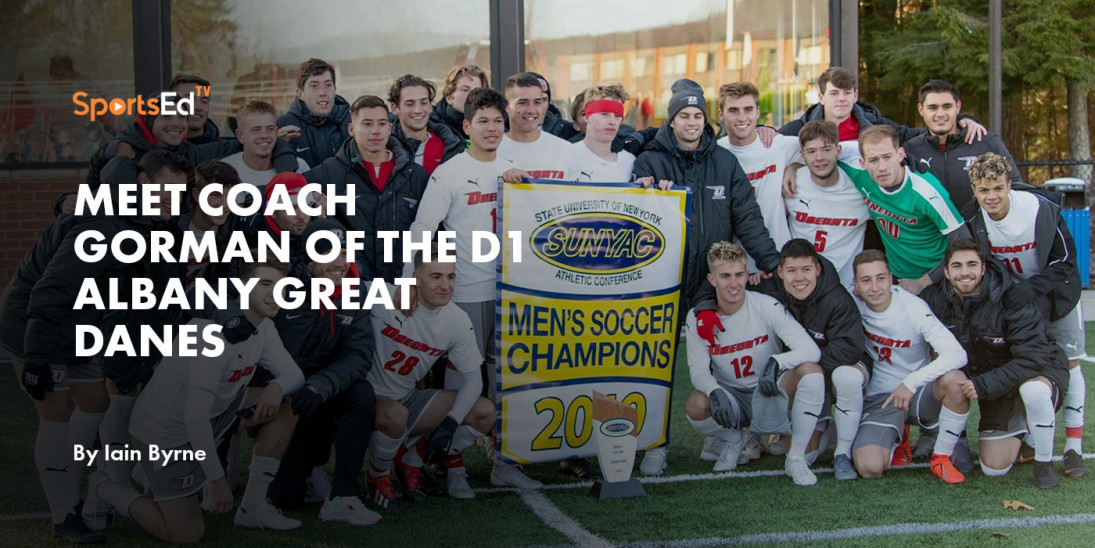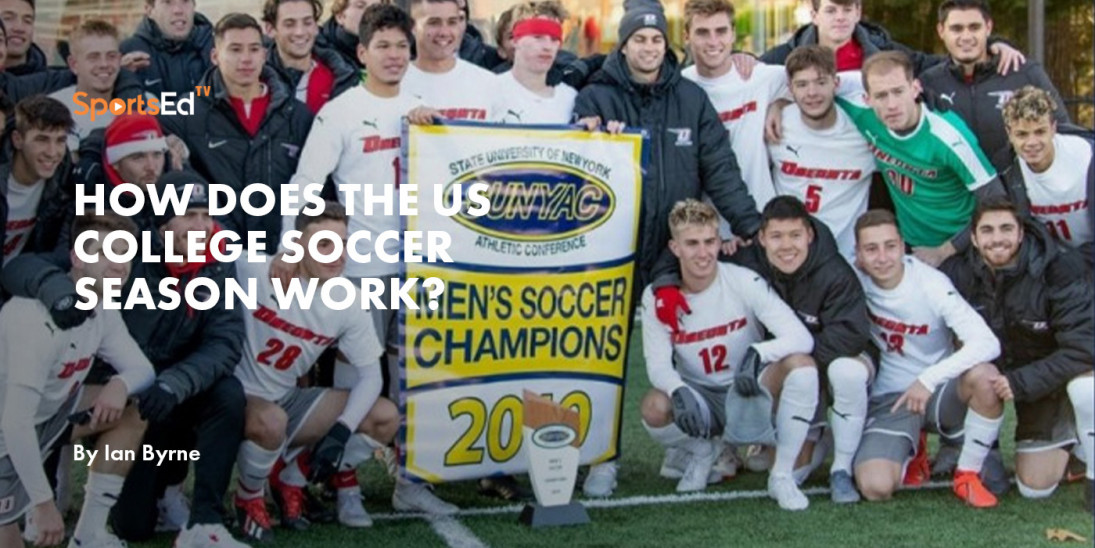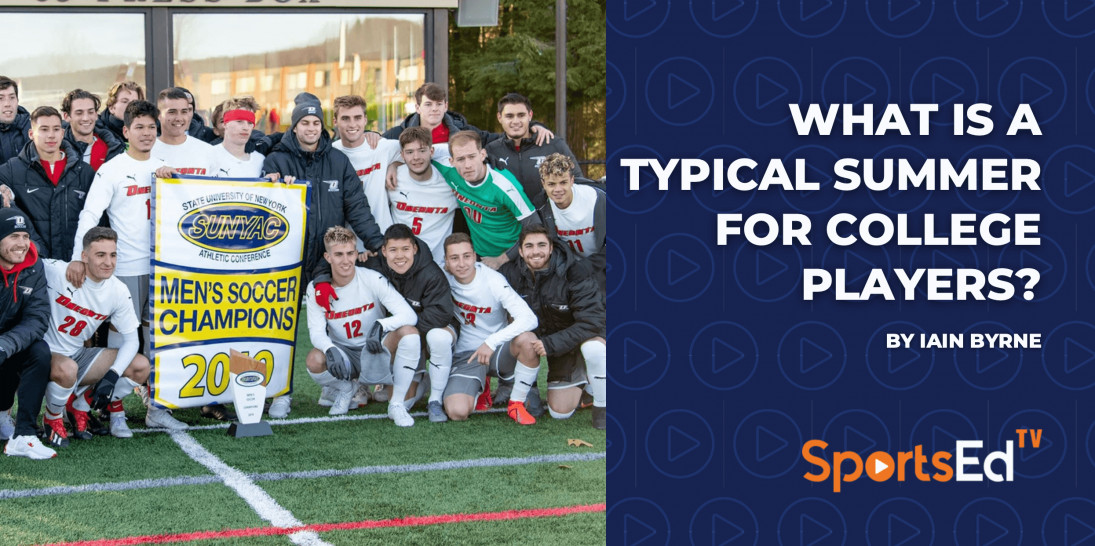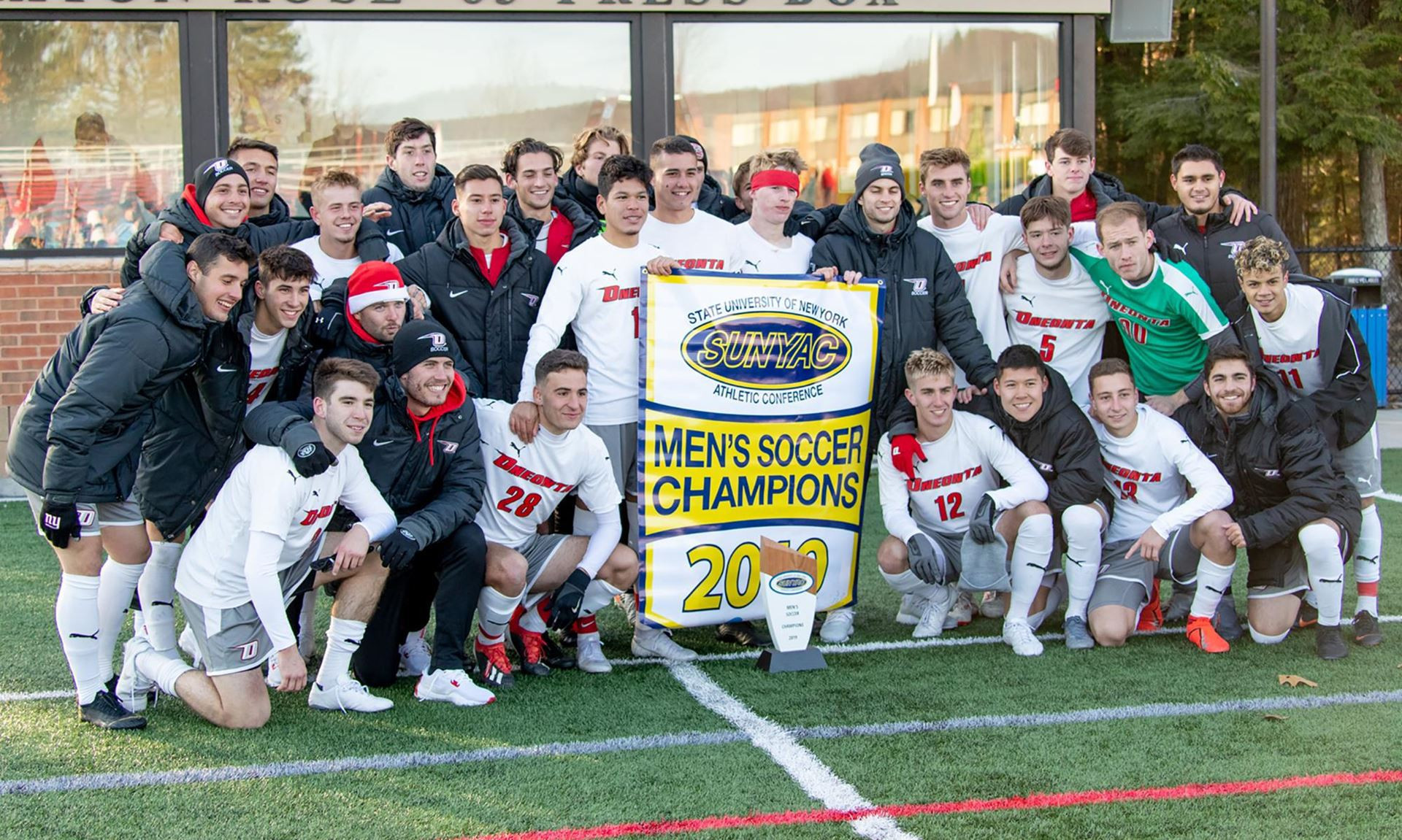Soccer
Welcome and thanks for visiting...

USA College Soccer Divisions Explained
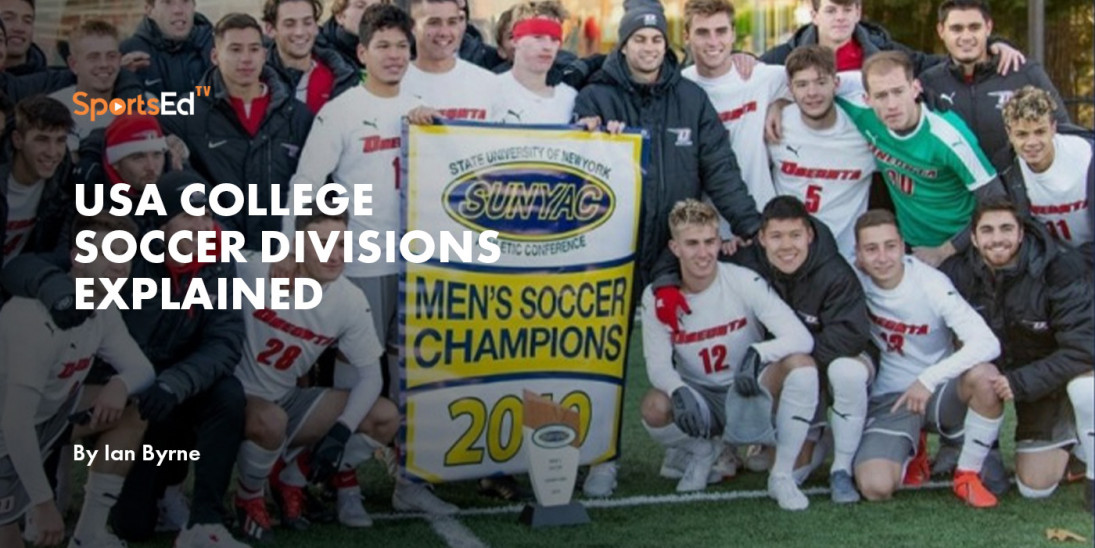
SportsEdTV Soccer is committed to bringing athletes, coaches, and parents pro-level Football education videos for FREE. All levels, anywhere, anytime. Check out our full instructional library and sign up to join our Soccer community.
Iain Byrne, head coach at Oneonta Men's Soccer and former professional player in South Africa, breaks down the details of college soccer accross Division 1, 2, 3, NAIA, and Junior Colleges, and how players should approach choosing where to spend their college soccer years.
Hello to all you future Lionel Messi’s, and Jurgen Klopp wannabes:
Welcome to the fourth posting from the heart of college soccer! I know many young players have dreams of playing college soccer in the USA. Not only is this a great soccer experience that gives you a platform to pursue a professional career after graduation, but you also earn a college degree that will be your foundation for future success off the field (and hopefully earn you plenty of $$$).
Understanding the breakdown of college soccer can be a little confusing, with multiple divisions and differing cultures. Having some experience across the spectrum, I thought I would offer some advice and try to eliminate some of the confusion.
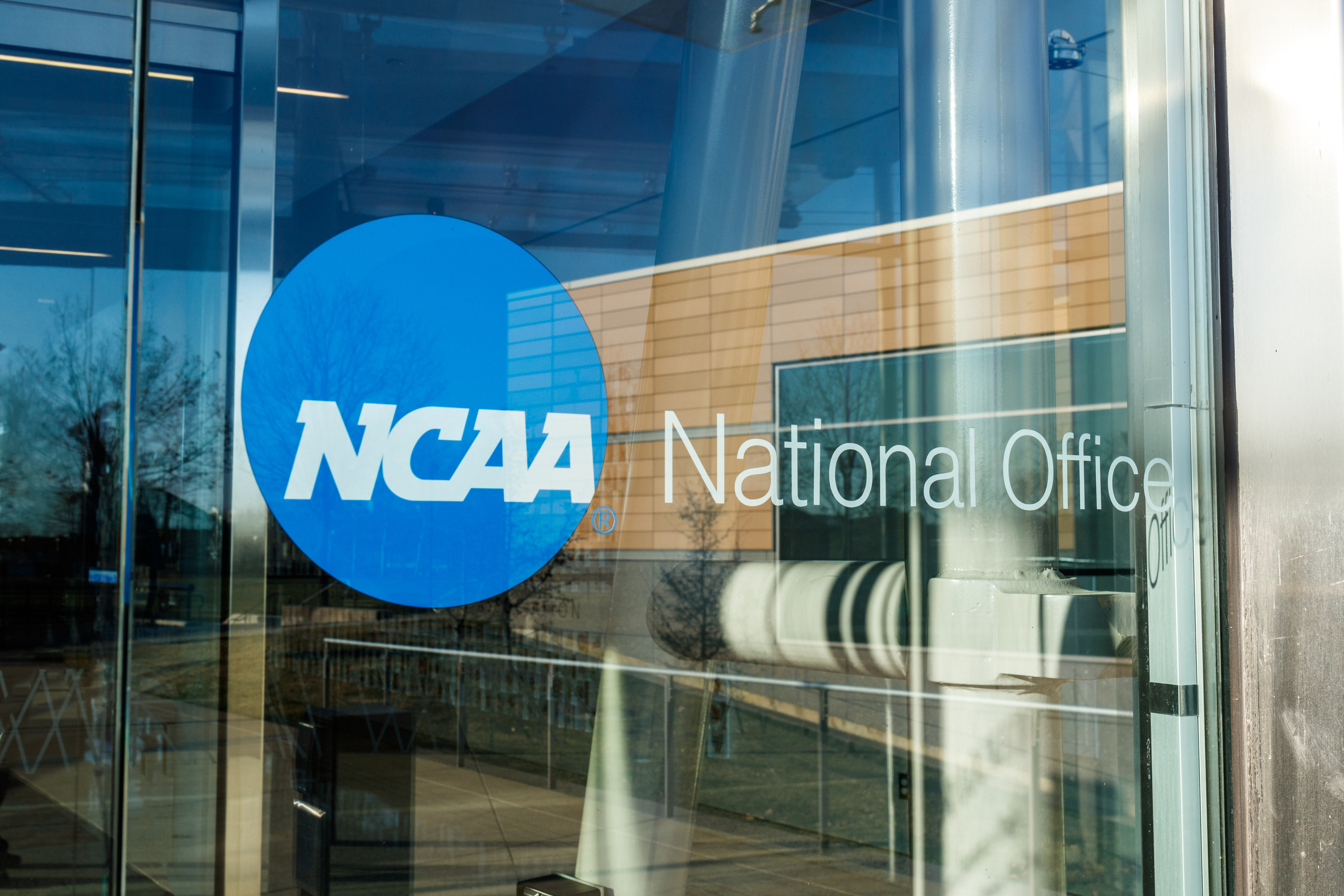
According to the NCAA, there are 351 Division I schools (D1), 308 Division II schools (DII), and 443 Division III schools (DIII). There is also the National Association of Intercollegiate Athletics (NAIA) with more than 250 schools and of course many options at the junior college (JC) level (2-year colleges) for high school athletes. There are similarities and differences across the divisions:
- DI, DII, and NAIA schools can offer “soccer scholarships” but only 55-60% of athletes at these schools receive either partial or full soccer scholarships.
- DIII schools cannot offer “soccer scholarships”.
- All DI and DII athletes must meet certain eligibility requirements set by the NCAA and prospects need to register with the NCAA Clearinghouse.
- To be eligible at a Division III school, the prospect only has to meet the individual school’s admission standards.
- Two-year colleges (JC) have both D1 and DIII divisions and the same scholarship rules apply.
The divisions can be misleading. While it is true that DI offers a higher level of competition and is home to some of the largest and most prestigious schools in the country, it does not mean there are not stellar opportunities to compete at prestigious colleges in Divisions II and III. In some cases, DII and DIII programs may have better teams and facilities than their D1 counterparts.
Many high school athletes who have the physical size, athleticism, and grades to compete at the DI level opt to go to a DII or DIII school for a variety of reasons. It may be they just wanted to go to a smaller school, stay closer to home, or have a chance to study abroad.
As you begin to compare your college options, it is important to understand the different college experiences for athletes in DI, DII and DIII programs. Here is a quick breakdown of what to expect:
Division I: Your sport is your life
For NCAA Division I players, the rewards are many, including competing at a large university in front of big crowds against some of the best athletes in your sport. Without a doubt, the best US born players gravitate to the most successful and prominent colleges in the country and the MLS professional teams focus their scouting at this top level. Keep in mind, the D1 teams fall into three basic tiers. There are the top 20-50 teams that are truly outstanding. The middle level of teams will be highly competitive, while the teams finishing near the bottom third of the D1 rankings often struggle from year to year. Some D1 programs lack funding with limited scholarships available, and they find it a challenge to remain competitive on the pitch.
Division I and the Ivy League
Unique to D1 is the Ivy League with some of the oldest and most prestigious schools in the country, including Brown University, Columbia, Cornell, University of Pennsylvania, Harvard, Princeton, Yale and Dartmouth. Most choose the Ivy League for its ultra-high level of competition in both athletics and academics. If an Ivy League school is on your target list, just note that these schools do not award academic or athletic scholarships. Financial aid is awarded on need determined by the Financial Aid Office at each school.
Division II: A more balanced approach
Student-athletes who want a high level of competition but a more balanced approach to sports and academics could consider DII schools. It is also perfect for those who may prefer a smaller campus or the opportunity to get playing time all four years. As one recruit put it, “I’d rather be a big fish in a smaller pond.” There are still the demands all student-athletes face, but it is not as intense and rigorous as the year-round total commitment of a DI athlete.
The surprising DIII difference
While DIII schools do not offer any type of athletic scholarships, parents will be pleased to know that 80 percent of DIII athletes receive non-athletics aid, often in the form of grants or need-based scholarships to academically qualified athletes. Another big plus for both parents and student-athletes is that 87 percent of all DIII athletes graduate from college. Many of the top ranked DIII teams would be competitive with D2 teams, and some of the lower ranked D1 programs.
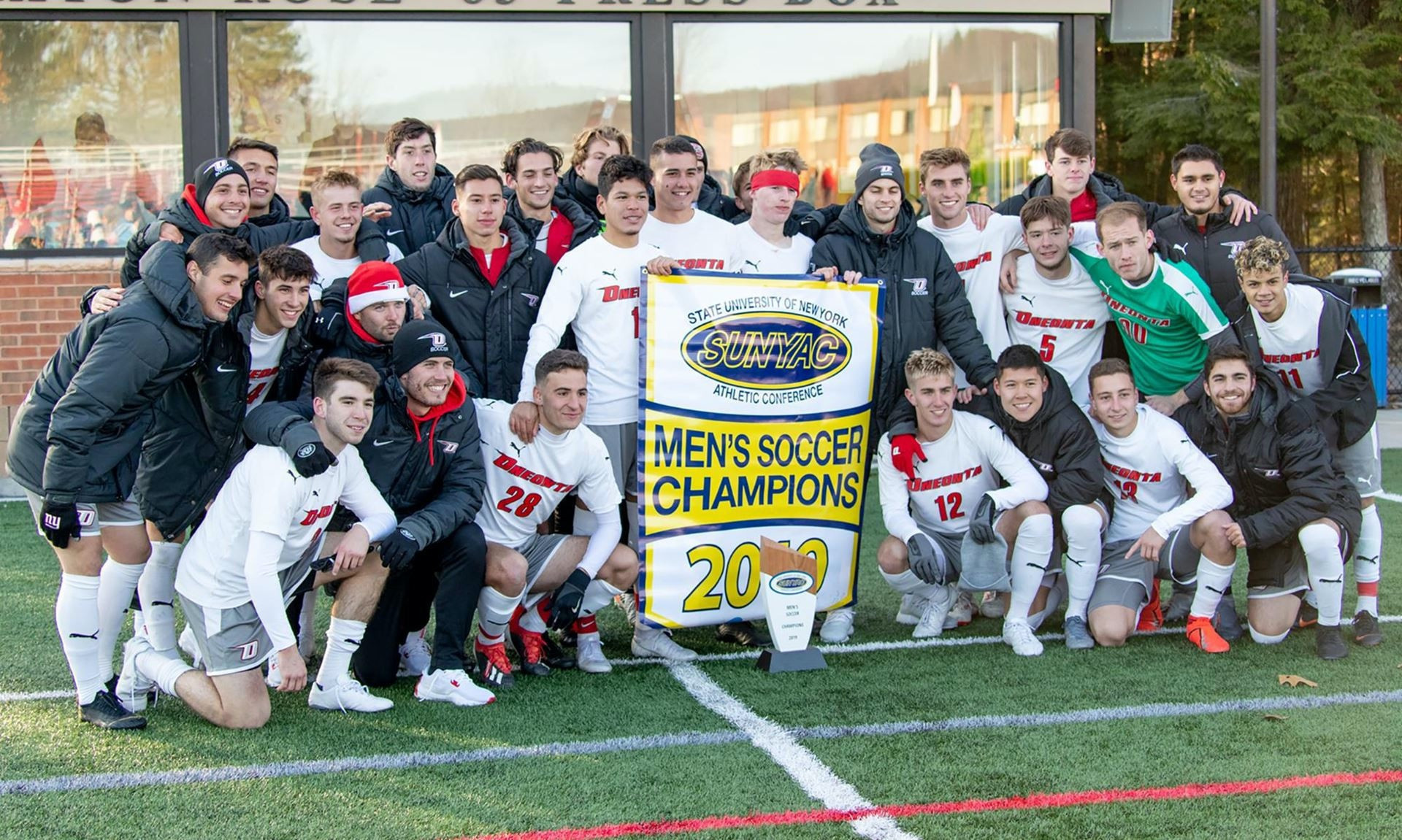
Oneonta as the 2019 SUNYAC Conference Champions
Why an NAIA school might be your best bet
The National Association of Intercollegiate Athletics (NAIA) has actually been around longer than the NCAA. With about 250 mostly private, smaller schools, more than 60,000 student-athletes compete at NAIA colleges in a variety of popular sports. Many consider NAIA to be on par with NCAA DIII schools when it comes to life/sport balance and level of competitiveness. The NAIA awards close to $500 million in athletic scholarships every year. Today, top-level NAIA schools are considered to be on a similar level to an NCAA DII team.
Do not ignore Junior Colleges
Junior Colleges can be a good introduction to college soccer. Many JC teams now also have a large number of international players in their ranks. Players spend their first two years competing at the JC level (the standard is competitive with four-year colleges) where they will also be in the shop window for coaches to scout them. After the two years are complete, they would then be eligible to join a four-year program and play their last two seasons of competition at that next level. Today's junior colleges have a lot to offer when it comes to scholarships and other cost-savings. For some athletes junior college is the best path to getting on a four-year college roster. For others, it is a chance to stay close to home, earn college credit, and continue with their athletic career. Admissions standards are usually less selective, so for players that did not excel in high school JC can be a first step to a college education.
While nearly everyone starts out thinking DI is the ultimate goal, it really comes down to the coaches that want to recruit you to their team. Do not just choose a college based on the soccer program; make sure the school is a good fit for your other needs. In case of an injury, you need to be sure the college will still be a good experience. The good news is that with three NCAA divisions, NAIA schools and junior colleges, there are plenty of options.
In my next post, I will explain how the college soccer seasons are structured. Till then, we have our…
… HIGHLIGHT OF THE WEEK
This week we enjoy Roberto Ventura’s wonder strike to win the 2017 SUNYAC Conference championship final: https://t.co/xggoPW9fqU
QUESTIONS
I would be happy to answer questions you have about college soccer in the USA… Shoot an email straight to iain.byrne@oneonta.edu
DRILL OF THE WEEK

